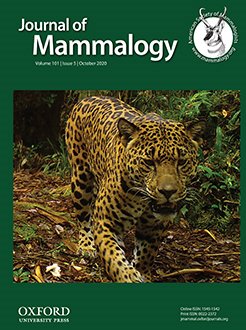Knowledge of a species' visual system has far reaching implications that affect our understanding of a species' ecology and evolutionary history. As a model taxon, the heteromyid rodent genus Dipodomys has been valuable in elucidating patterns and mechanisms in biomechanics, ecology, adaptive physiology, biogeography, and more. Although studied extensively, the visual system of Dipodomys has not been described beyond anecdotal mention of their large eyes. Here, the transmittance parameters of the cornea and lens of Ord's kangaroo rat (Dipodomys ordii) were analyzed and photoreceptor proteins (opsins) expressed in the retina were identified with immunohistochemical (IHC) labeling. Retina maps were constructed to illustrate the relative densities of photoreceptor cells expressing short wavelength (SWS1) opsins, middle/long wavelength (MW/LW) opsins, and rhodopsin (RH1). The retina of D. ordii has variable densities of SWS1 opsin with the highest density being ventral to the optic nerve, high density of MW/LW opsin, and uniform distribution and high density of RH1 across the retina. Our results suggest that D. ordii has a UV-sensitive visual system. Composition and densities of MW/LW- and SWS1-expressing cells resemble that of a crepuscular/diurnal species thereby supporting previous authors who have reported such activity patterns. Uniform retinal distribution of RH1 indicates visual acuity at night, also confirming the paradigm of D. ordii as primarily a nocturnal species and suggesting visual acuity at all times of the day in the species. These results demonstrate not only that the species is capable of UV vision and has a retina characteristic of a diurnal mammal, but that many previously unknown photic niche selective advantages likely have shaped the evolution and ecology of this model taxon.
How to translate text using browser tools
18 August 2020
Ultraviolet vision in Ord's kangaroo rat (Dipodomys ordii)
Brandon McDonald,
Bryce Geiger,
Sarah Vrla
ACCESS THE FULL ARTICLE

Journal of Mammalogy
Vol. 101 • No. 5
October 2020
Vol. 101 • No. 5
October 2020
beta (β)-band absorption
Geomoyidea
lambda max (λMax)
sensory ecology
spectral tuning




